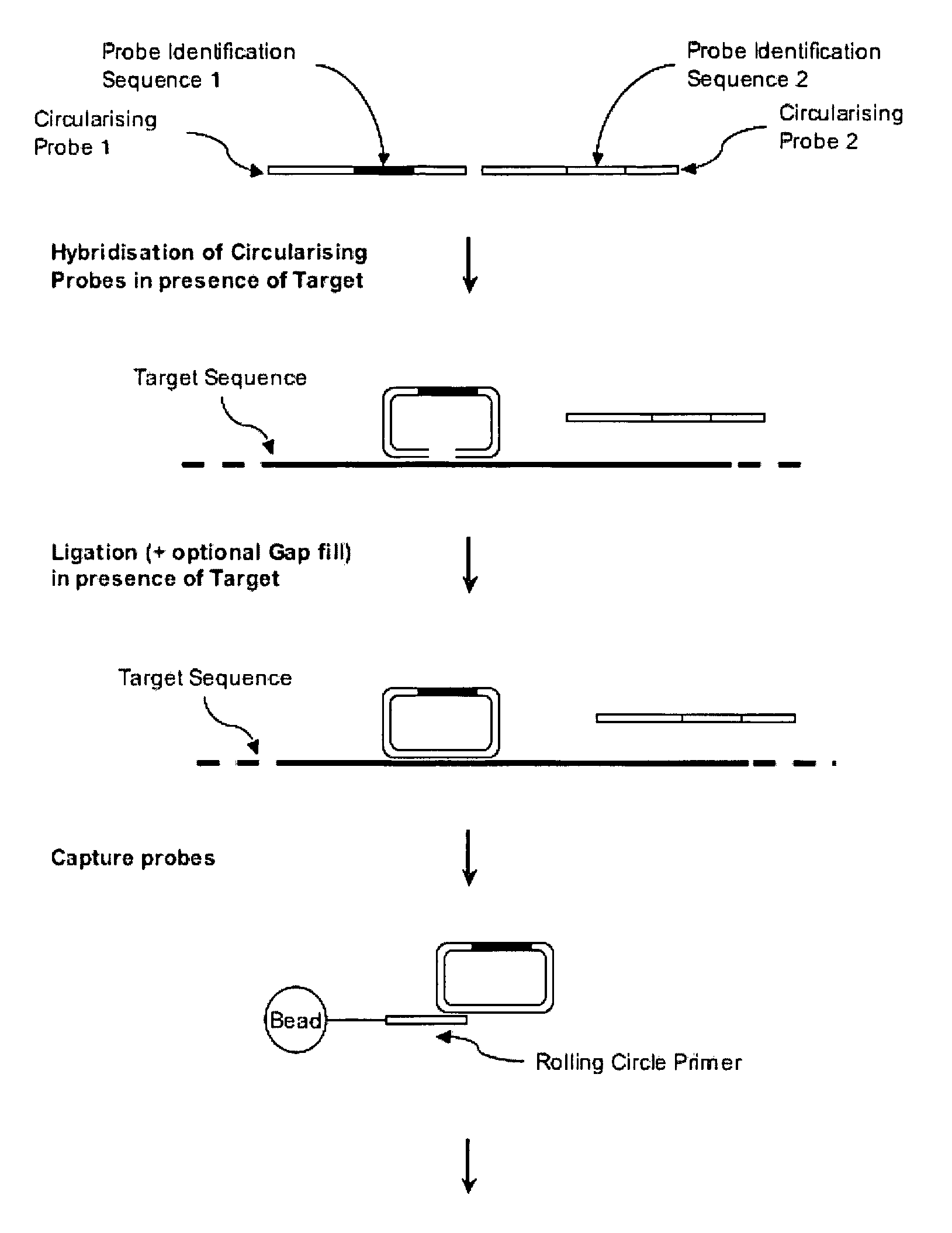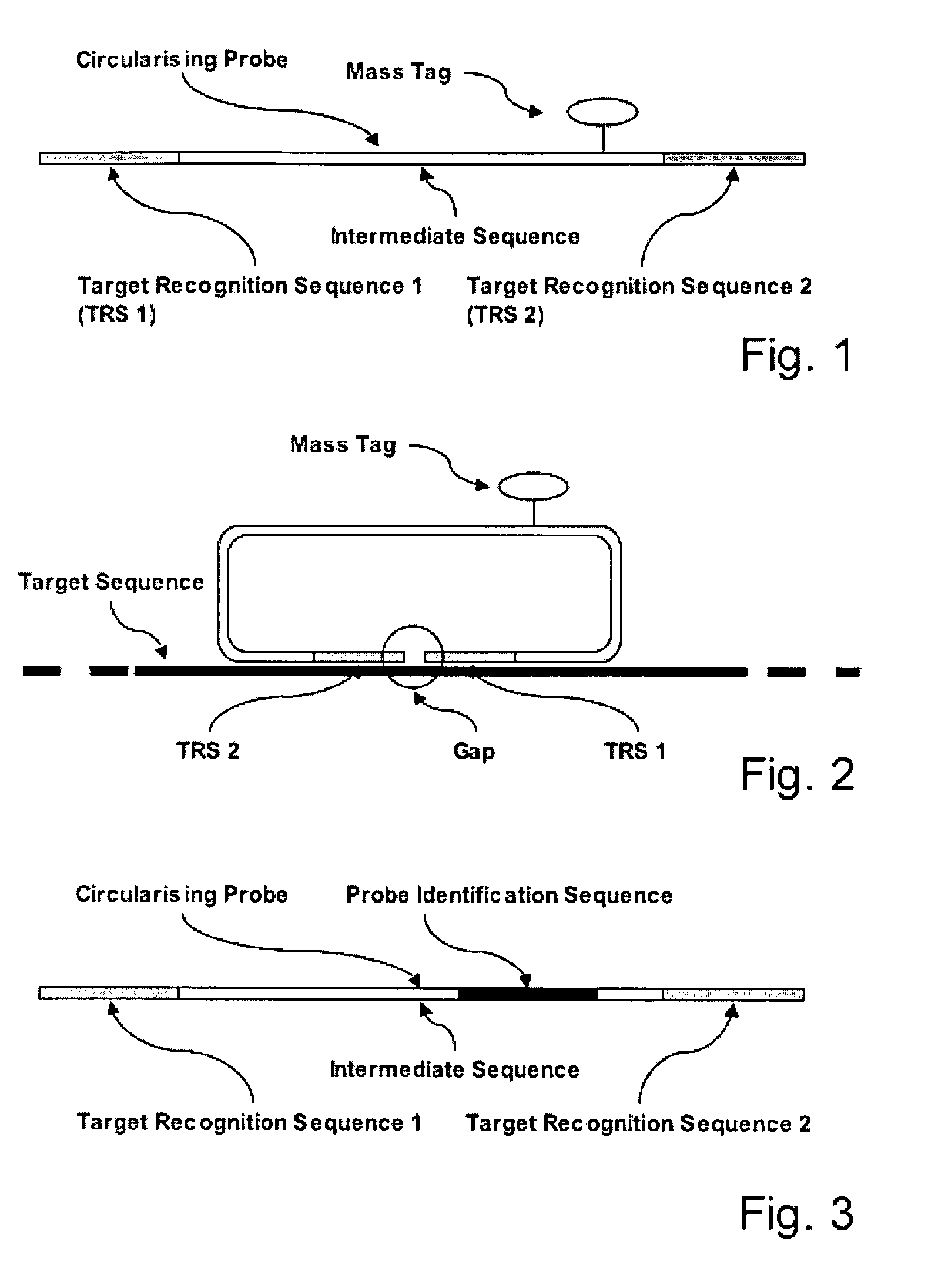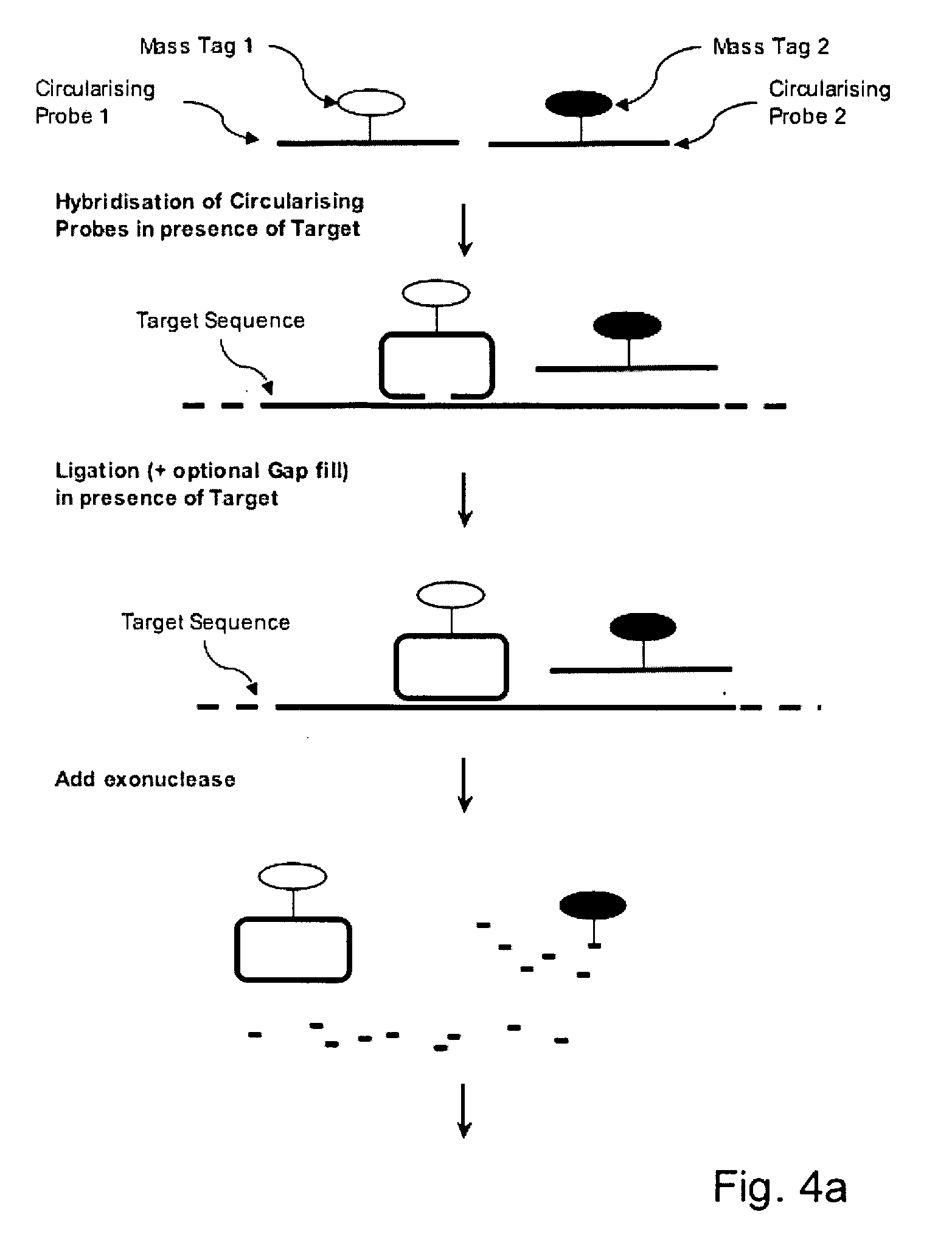Use of Mass Labelled Probes to Detect Target Nucleic Acids Using Mass Spectrometry
- Summary
- Abstract
- Description
- Claims
- Application Information
AI Technical Summary
Benefits of technology
Problems solved by technology
Method used
Image
Examples
Embodiment Construction
[0051] This invention describes reagents, methods and kits that exploit circularising probes to characterise nucleic acids by mass spectrometry.
[0052] Definitions
[0053] The term ‘MS / MS’ in the context of mass spectrometers refers to mass spectrometers capable of selecting ions, subjecting selected ions to Collision Induced Dissociation (CID) and subjecting the fragment ions to further analysis.
[0054] The term ‘serial instrument’ refers to mass spectrometers capable of MS / MS in which mass analysers are organised in series and each step of the MS / MS process is performed one after the other in linked mass analysers. Typical serial instruments include triple quadrupole mass spectrometers, tandem sector instruments and quadrupole time of flight mass spectrometers.
[0055] A Linear Circularising Probe (LCP) is probe sequence where the two termini of the probe comprise Target Recognition Sequences (TRS) that are designed to hybridise in juxtaposition on a target nucleic acid. The 3′ term...
PUM
| Property | Measurement | Unit |
|---|---|---|
| Mass | aaaaa | aaaaa |
| Affinity | aaaaa | aaaaa |
Abstract
Description
Claims
Application Information
 Login to View More
Login to View More - R&D
- Intellectual Property
- Life Sciences
- Materials
- Tech Scout
- Unparalleled Data Quality
- Higher Quality Content
- 60% Fewer Hallucinations
Browse by: Latest US Patents, China's latest patents, Technical Efficacy Thesaurus, Application Domain, Technology Topic, Popular Technical Reports.
© 2025 PatSnap. All rights reserved.Legal|Privacy policy|Modern Slavery Act Transparency Statement|Sitemap|About US| Contact US: help@patsnap.com



